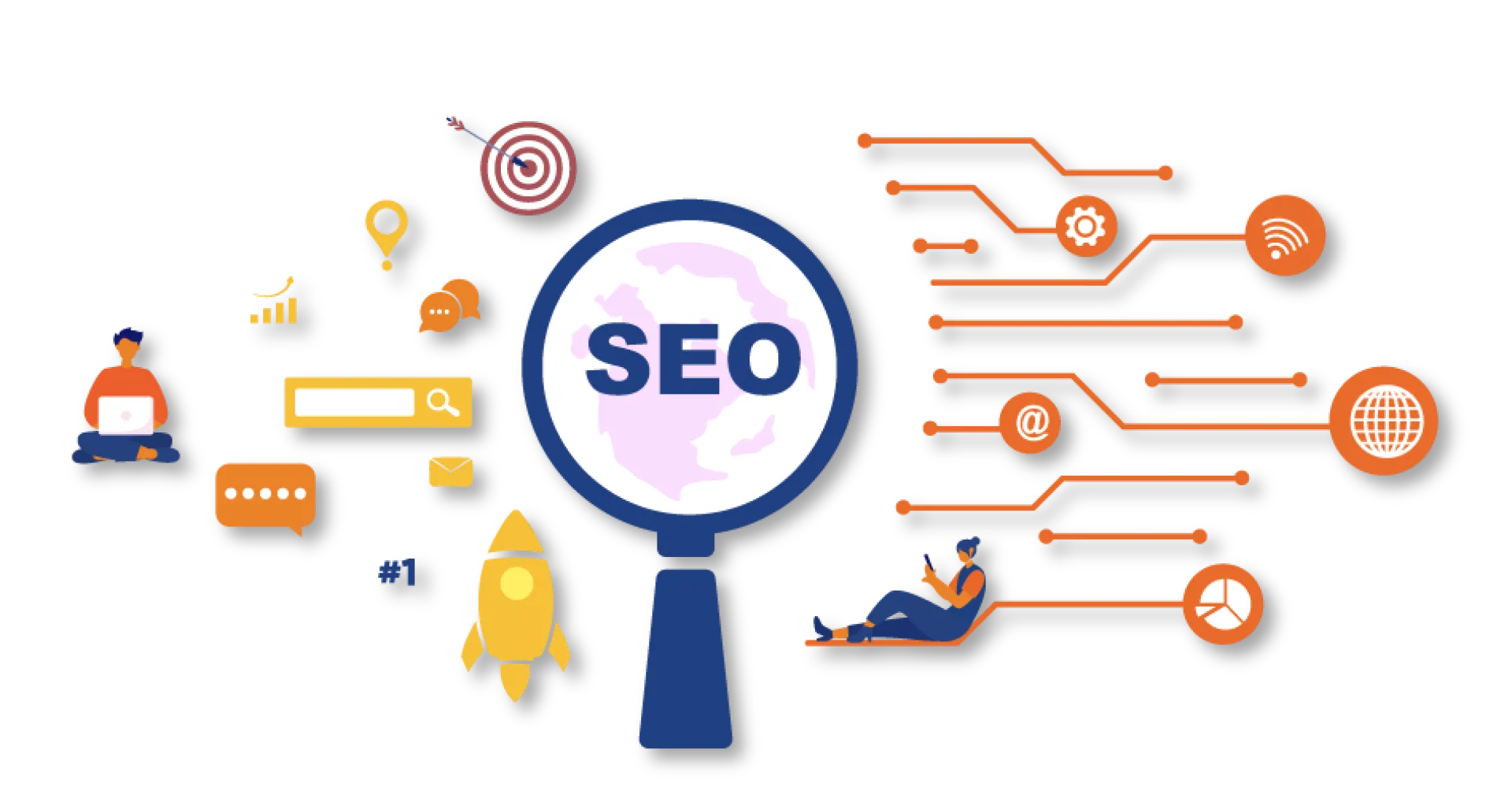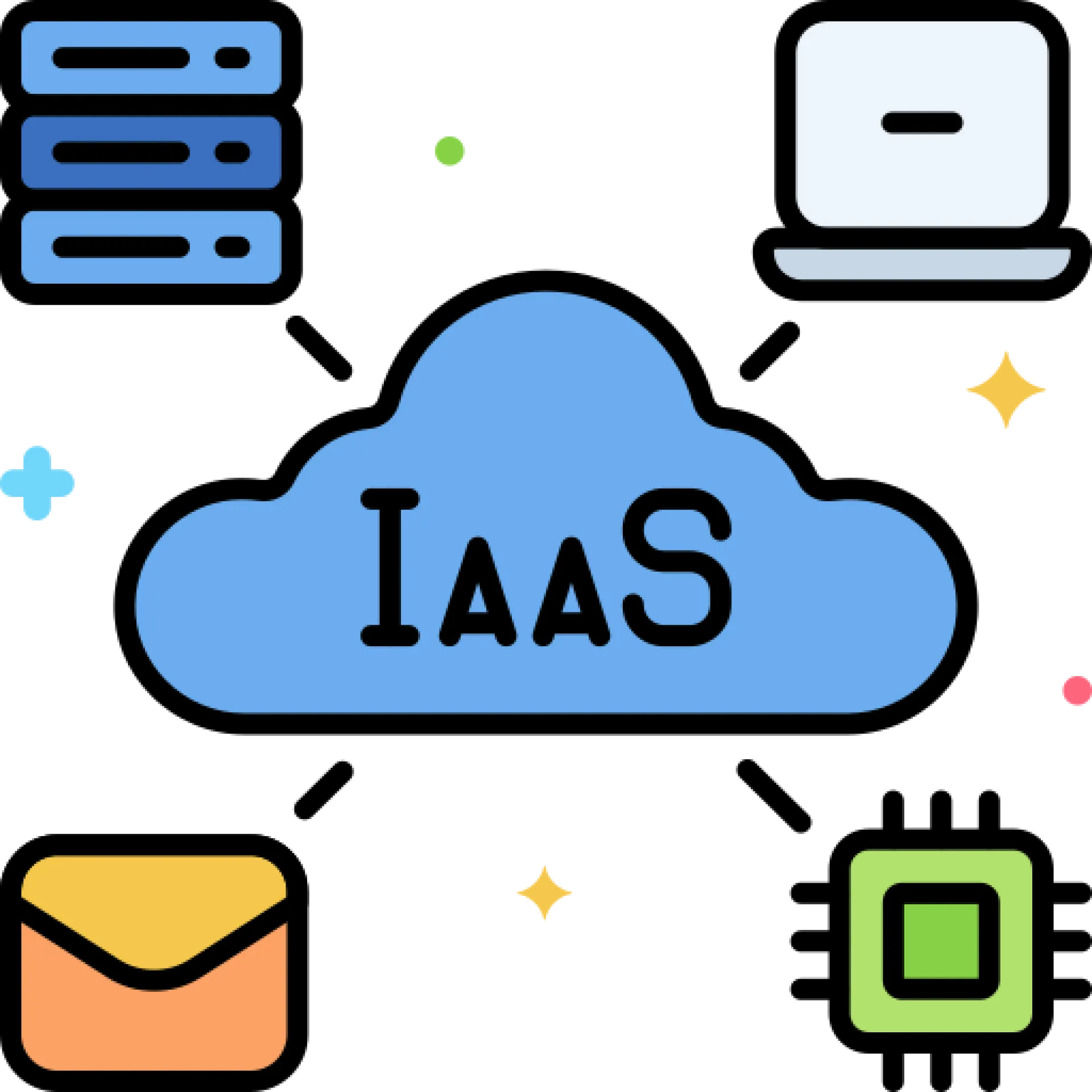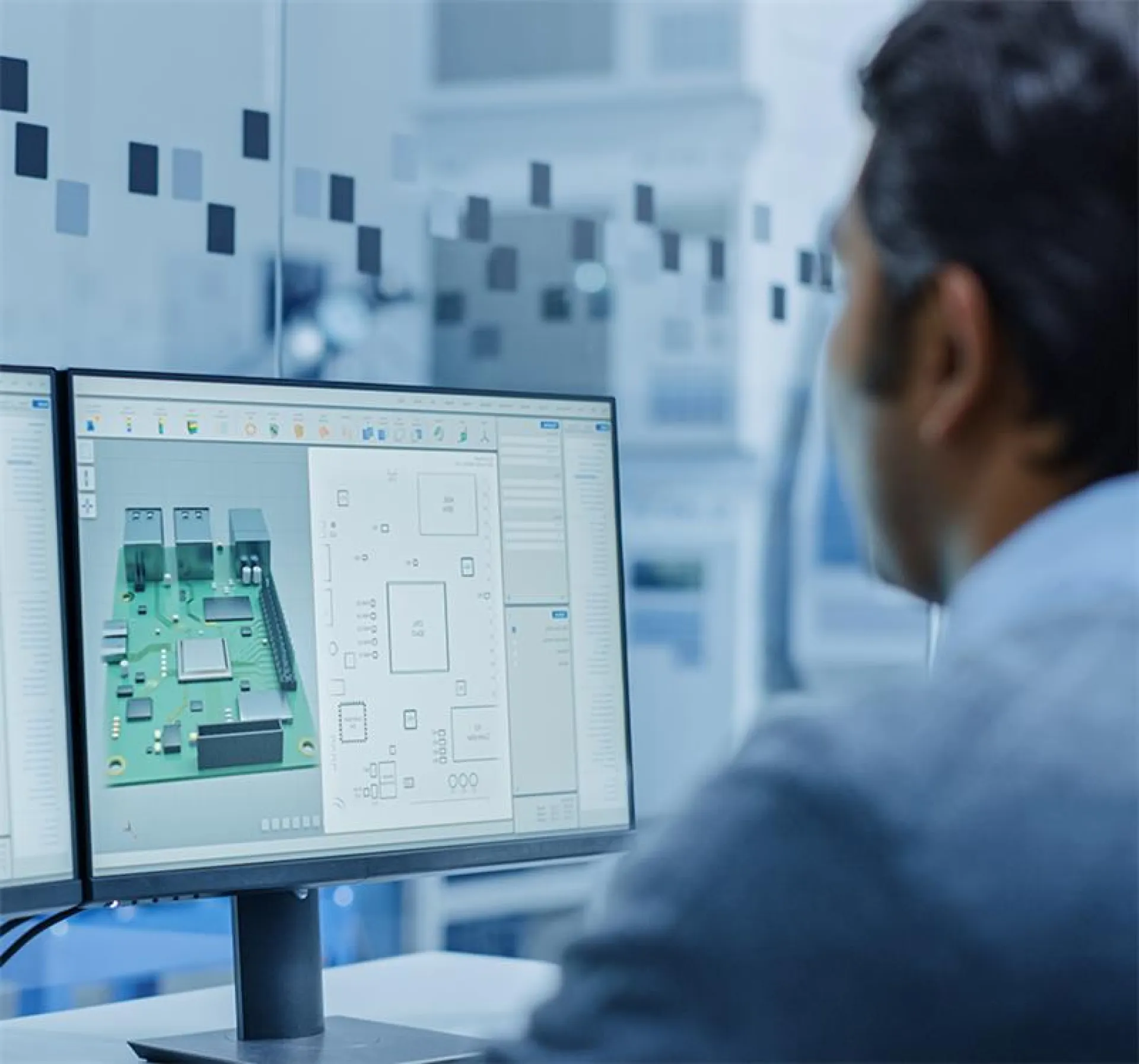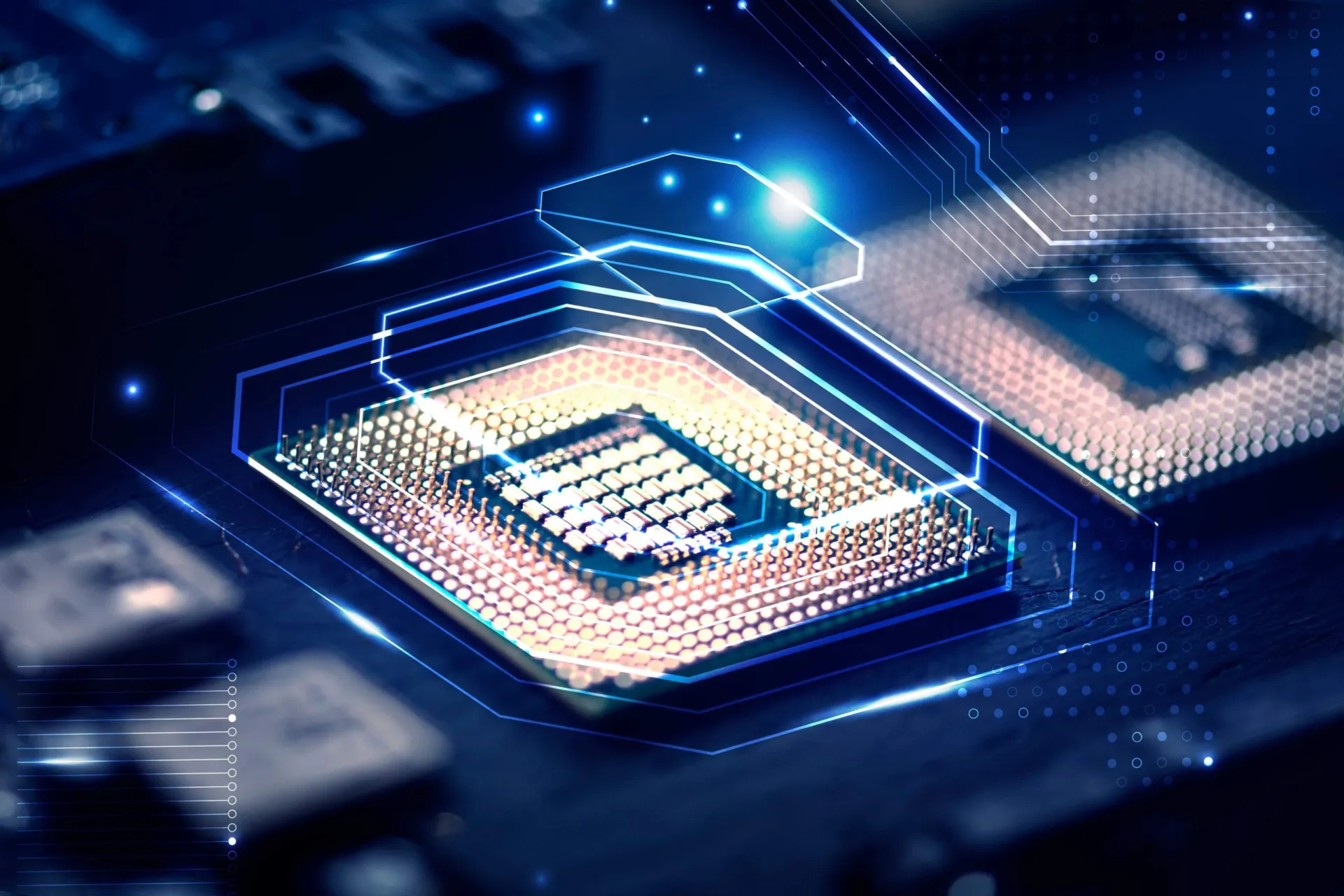Install Huzzler App
Install our app for a better experience and quick access to Huzzler.

Posts
In today’s hyper-connected digital world, simply having a website is no longer enough. If your site isn’t being seen by the right audience, your content, products, or services can get lost in the noise. That’s where SEO—Search Engine Optimization—comes in. Whether you're a startup founder, small business owner, or digital enthusiast, SEO solutions are the key to making your online presence not just visible, but valuable.
Welcome to Jenex Technovation’s guest post series, where today, we’ll explore the most effective, friendly, and forward-thinking SEO solutions to help your brand rise above the competition.
What Is SEO and Why Does It Matter?
SEO is the practice of optimizing your website so it ranks higher in search engine results pages (SERPs). The higher you rank, the more likely people are to find you. But SEO isn’t just about keywords anymore. It’s a combination of technical precision, content quality, user experience, and strategic thinking.
Why is SEO essential?
- 93% of online experiences begin with a search engine
- 75% of users never scroll past the first page
- Organic search accounts for 53% of all website traffic
In short, SEO is your digital visibility lifeline.
Core SEO Solutions That Work in 2025
The landscape of SEO has evolved dramatically. Gone are the days of keyword stuffing and backlink buying. Today’s SEO is smarter, more user-focused, and driven by quality. Let’s break down the top SEO solutions that matter most today.
1. Keyword Research with Intent
Keyword research is still a cornerstone of SEO—but it's not just about volume. Today, you must focus on user intent: What are users really looking for when they type a query?
Solution:
Use tools like Ahrefs, SEMrush, or Google Keyword Planner to find keywords that reflect informational, transactional, or navigational intent. Then, optimize your pages around those keywords in a natural, conversational way.
2. High-Quality, Optimized Content
Content is not just king—it’s the entire kingdom. Google rewards content that is:
- Original
- Authoritative
- Engaging
- Useful
Solution:
Create long-form, informative blog posts, landing pages, and guides that solve real problems for your audience. Incorporate keywords naturally, use headings, internal links, and multimedia to keep users engaged.
Pro Tip: Update your content regularly to reflect the latest trends and keep rankings high.
3. Mobile-First Optimization
Over 60% of searches now happen on mobile devices. If your site isn’t mobile-optimized, you’re losing traffic—and rankings.
Solution:
Use responsive design, fast-loading images, and mobile-friendly fonts. Google’s Mobile-Friendly Test can help evaluate how well your site performs on smartphones and tablets.
4. Technical SEO: Under the Hood
Even the best content won’t rank if search engines can’t crawl and index your site properly.
Solution:
Technical SEO includes:
- XML sitemaps
- Clean URL structures
- Fast page speed (ideally under 2.5 seconds)
- Secure HTTPS encryption
- Fixing crawl errors (via Google Search Console)
Invest in a technical audit to uncover hidden issues that may be holding your site back.
5. Local SEO for Local Success
If you’re a business serving specific regions or cities, local SEO is non-negotiable.
Solution:
- Claim and optimize your Google Business Profile
- Collect and respond to customer reviews
- Use location-based keywords in your content
- Ensure NAP consistency (Name, Address, Phone) across directories
Local SEO helps your business show up on maps, local searches, and "near me" queries—right when users are ready to convert.
6. Link Building: Quality Over Quantity
Backlinks are like upvotes from other websites. But in 2025, one good backlink from an authoritative site is worth far more than a dozen low-quality ones.
Solution:
Earn links by:
- Creating shareable, insightful content
- Building relationships with industry bloggers and influencers
- Guest posting (like this one!)
- Getting listed in reputable directories and news sites
Avoid shady link schemes—they’re not worth the penalty.
7. Voice Search and AI Optimization
Voice search is growing fast with the rise of smart assistants. Queries are now more conversational: “What’s the best SEO solution for my small business?”
Solution:
- Use natural language in your content
- Answer specific questions using FAQ-style formats
- Optimize for featured snippets, which voice assistants often pull from
Staying ahead means adapting your strategy to how people actually search.
SEO: Not a One-Time Fix, But a Long-Term Strategy
SEO is not a magic switch—it’s a process. Algorithms change. Competitors evolve. But by investing in the right solutions and staying informed, you can build lasting visibility and trust.
If you're just starting out or need help rebooting your current strategy, consider an SEO partner who understands the nuances of your industry. At Jenex Technovation, we’re passionate about helping businesses grow smarter, not just bigger.
Final Thoughts: Start Where You Are
No matter your niche or size, SEO has something to offer. Start with what you can control: your content, your site structure, and your users' experience. The rest will follow with time, consistency, and expert guidance.
Want to learn more about how Jenex Technovation can support your SEO goals? Get in touch with us today for tailored SEO solutions that meet your business needs—efficiently, ethically, and effectively.

Artificial Intelligence (AI) and Machine Learning (ML) are no longer just buzzwords thrown around in tech circles—they are the engines driving a profound transformation across every major industry. From healthcare to finance, agriculture to entertainment, the integration of AI/ML solutions is reshaping how we live, work, and think.
At Jenex Technovation, we believe in decoding complex technology into clear, actionable knowledge. In this post, we’ll explore what AI and ML really mean, how they're being applied across industries, and what businesses need to know to successfully adopt these groundbreaking technologies.
What Are AI and ML, Really?
Let’s start by demystifying the terms:
- Artificial Intelligence (AI) is the broader concept of machines being able to carry out tasks in a way that we would consider “smart.” This includes everything from decision-making and visual perception to language translation and speech recognition.
- Machine Learning (ML) is a subset of AI. It enables systems to learn and improve from experience without being explicitly programmed. ML algorithms detect patterns in data and make predictions or decisions based on that data.
In simple terms, AI is the brain, and ML is the learning process that feeds it.
Why AI/ML Solutions Matter Now
Three major factors have pushed AI/ML from research labs to real-world applications:
- Data Explosion: We now generate vast amounts of data every second—far more than any human could process manually.
- Computational Power: Advances in computing (especially GPUs and cloud infrastructure) have made it feasible to train complex models faster and more affordably.
- Open-Source Tools: Libraries like TensorFlow, PyTorch, and Scikit-learn have democratized access to ML development, allowing even small teams to build sophisticated models.
Together, these advancements have created a perfect storm for AI/ML solutions to thrive.
Real-World Applications of AI/ML
Let’s dive into how AI/ML is being used across various sectors:
1. Healthcare
AI algorithms can detect diseases in medical images with accuracy rivalling human doctors. ML models are used for early diagnosis, personalized treatment plans, drug discovery, and even robotic-assisted surgeries.
Example: Google Health’s AI model can spot breast cancer in mammograms more accurately than radiologists in some scenarios.
2. Finance
Banks and financial institutions use AI/ML for fraud detection, credit scoring, algorithmic trading, and risk assessment.
Example: ML models can flag suspicious transactions in real-time, protecting users from identity theft and fraud.
3. Retail and E-commerce
From personalized recommendations to inventory forecasting and customer service bots, AI/ML transforms both front-end and back-end retail operations.
Example: Amazon’s recommendation engine drives over 30% of its revenue using ML algorithms that analyze past behaviors and preferences.
4. Manufacturing
AI is revolutionizing predictive maintenance, quality control, and supply chain optimization. Smart sensors and ML models can predict when equipment is likely to fail, reducing downtime and maintenance costs.
5. Transportation and Logistics
Self-driving cars, route optimization, and demand forecasting are all powered by AI/ML. These technologies not only improve efficiency but also enhance safety.
Challenges in AI/ML Adoption
Despite its promise, adopting AI/ML is not without its challenges:
- Data Quality: ML models are only as good as the data they’re trained on. Poor quality or biased data can lead to inaccurate predictions.
- Talent Shortage: There’s a global shortage of skilled AI/ML professionals, making it difficult for many companies to scale their initiatives.
- Ethical and Legal Concerns: Issues like algorithmic bias, privacy, and explainability are major concerns, particularly in sensitive fields like healthcare and law enforcement.
- Integration: AI/ML projects often fail because they aren’t integrated well into existing business workflows.
At Jenex Technovation, we help organizations navigate these challenges with customized AI/ML solutions that align with their goals and capabilities.
Getting Started: Tips for Businesses
If your business is looking to explore AI/ML, here are a few friendly tips to begin:
- Start Small: Don’t try to revolutionize everything at once. Begin with a pilot project—perhaps a recommendation system or customer segmentation model.
- Focus on ROI: Choose projects that can deliver measurable results within 3–6 months.
- Leverage Existing Tools: Use platforms like AWS SageMaker, Azure ML Studio, or Google Cloud AI tools to reduce setup time.
- Build the Right Team: If you don’t have in-house expertise, consider partnering with a technology consultancy like Jenex Technovation.
- Stay Agile: AI/ML is an iterative process. Be prepared to test, learn, and pivot.
The Future of AI/ML
We are only scratching the surface of AI’s potential. As new techniques like federated learning, reinforcement learning, and generative AI (such as ChatGPT and Sora) continue to evolve, the possibilities will expand further.
One promising trend is AI democratization—making tools and knowledge accessible to non-technical users through no-code platforms. This will accelerate adoption across industries and enable innovation at all levels.
Final Thoughts
AI and ML are not just technologies; they’re transformation enablers. The organizations that understand how to harness their power will lead in innovation, efficiency, and customer satisfaction. Whether you're a startup looking to gain a competitive edge or an enterprise aiming to modernize your infrastructure, AI/ML solutions can be tailored to meet your needs.

In today’s fast-paced digital world, mobile applications have become the linchpin of customer engagement, operational efficiency, and brand identity. Whether you’re a startup trying to make your mark or an established enterprise looking to streamline processes, mobile application solutions offer a gateway to meaningful interaction with users, clients, and partners.
At Jenex Technovation, we believe that technology should be accessible, innovative, and designed with purpose. This article will walk you through what mobile application solutions really mean, why they’re vital in today’s marketplace, and how you can choose the right path to building an app that truly makes a difference.
What Are Mobile Application Solutions?
Mobile application solutions refer to the end-to-end process of designing, developing, deploying, and maintaining applications specifically designed for mobile devices such as smartphones and tablets. These apps can be native (built specifically for iOS or Android), hybrid (a combination of native and web technologies), or web-based (mobile-optimized websites).
But a “solution” implies more than just the app itself—it includes identifying a problem or need, tailoring a digital experience around it, and ensuring long-term usability and support.
Why Your Business Needs a Mobile App
1. Direct Communication with Customers:
Mobile apps provide an uninterrupted channel between you and your users. Push notifications, in-app messaging, and updates allow you to keep users engaged and informed in real-time.
2. Brand Presence and Loyalty:
A well-designed app becomes a constant visual reminder of your brand on the user’s device. With the right strategy, this translates into improved customer retention and brand loyalty.
3. Streamlined Operations:
Custom apps can automate business processes, manage inventory, schedule services, and enable mobile point-of-sale systems—leading to time and cost savings.
4. Access to Data and Insights:
Apps provide rich analytics. Understand what features users engage with, where they drop off, and how they navigate your content—allowing for data-driven decisions.
5. Competitive Edge:
In many industries, a mobile-first approach is no longer a luxury—it’s a necessity. Offering a feature-rich app could be the key differentiator that sets your business apart from the competition.
Choosing the Right Type of Mobile App
One of the first steps in developing a mobile application solution is deciding which type best suits your needs:
Native Apps
- Built specifically for iOS (Swift/Objective-C) or Android (Kotlin/Java)
- High performance and responsive UI
- Ideal for complex features like AR, geolocation, or real-time interactions
Hybrid Apps
- Built using frameworks like React Native, Flutter, or Ionic
- Cross-platform support from a single codebase
- Faster development and lower cost
Progressive Web Apps (PWAs)
- Web applications that behave like native apps
- Accessible through a browser but installable on the home screen
- Great for businesses prioritizing reach over advanced features
The choice depends on your budget, timeline, target audience, and feature requirements.
Key Features of a Successful Mobile Application
Creating a successful app is about more than coding. Here are some critical elements to include:
- User-Centric Design: Clear navigation, intuitive interfaces, and consistent branding.
- Security Measures: Secure login, encrypted data storage, and compliance with privacy regulations.
- Offline Functionality: Allow users to access essential features even without internet connectivity.
- Performance Optimization: Fast load times and minimal crashes are essential to user retention.
- Scalability: Plan ahead for increased users, content, and functionality.
The Development Process at Jenex Technovation
At Jenex Technovation, our approach to mobile application development is both strategic and collaborative. Here’s how we typically work with clients:
- Discovery & Planning: We begin by understanding your business goals, user personas, and desired features.
- Design: Our UX/UI designers craft prototypes that align with your brand and offer smooth user experiences.
- Development: Agile development ensures that you can see progress in real-time and provide feedback throughout.
- Testing & QA: Rigorous testing is done on multiple devices to ensure functionality and performance.
- Deployment: We manage app store submissions and backend configurations for a smooth launch.
- Support & Updates: We provide post-launch support, updates, and enhancements to keep your app relevant and efficient.
Trends to Watch in 2025 and Beyond
Mobile app solutions are constantly evolving. Here are a few trends that are shaping the future:
- AI Integration: From chatbots to personalized content recommendations.
- 5G-Enhanced Experiences: Faster data speeds are enabling richer, more immersive app features.
- Voice and Gesture Controls: Making apps more accessible and user-friendly.
- Wearable App Development: Extending app functionality to smartwatches and fitness bands.
- AR and VR: Especially in retail, real estate, and education sectors.
Staying ahead of these trends ensures your mobile strategy remains forward-thinking and future-proof.
Final Thoughts
A mobile application is no longer just a digital accessory—it’s a core component of a modern business strategy. Whether your goal is to connect more deeply with your audience, digitize services, or innovate within your industry, a thoughtfully designed mobile app can help you get there.
At Jenex Technovation, we pride ourselves on transforming great ideas into intuitive, impactful mobile solutions. If you're ready to explore how a custom app can elevate your business, we’d love to be your partner in innovation.

In today’s fast-paced digital era, businesses and individuals alike are embracing a major shift in how data, applications, and IT services are managed: through the cloud. “Cloud solutions” has become more than a buzzword — it’s now a foundational part of innovation, scalability, and agility in nearly every industry. Whether you're a startup exploring your first software-as-a-service (SaaS) platform or an enterprise undergoing digital transformation, understanding cloud solutions is key to staying competitive.
So, what exactly are cloud solutions, and why should they matter to you? Let’s break it down in a friendly, approachable way.
What Are Cloud Solutions?
At its core, cloud solutions refer to services delivered over the internet — the “cloud” — that offer computing power, storage, networking, and software without the need to own or maintain physical infrastructure.
There are three main types of cloud computing services:
- Infrastructure as a Service (IaaS) – Think of this as renting IT infrastructure (like servers or storage) from a cloud provider like Amazon Web Services (AWS) or Microsoft Azure.
- Platform as a Service (PaaS) – This offers a ready-to-use platform for developers to build, test, and deploy applications without managing the underlying hardware.
- Software as a Service (SaaS) – Popular tools like Google Workspace, Salesforce, and Dropbox fall under this category, where software is accessed on a subscription basis via the internet.
These services can be deployed through public clouds (shared infrastructure), private clouds (dedicated to one organization), or hybrid clouds (a mix of both).
Why Cloud Solutions Matter
Cloud technology isn't just for tech giants anymore. From small businesses to global enterprises, cloud solutions offer a host of benefits that make digital life smoother, smarter, and more secure:
1. Cost-Effectiveness
With cloud computing, there's no need for hefty upfront investments in hardware or expensive data centers. You pay only for what you use, making it budget-friendly for businesses of all sizes.
2. Scalability
Need to add more storage or ramp up processing power? Cloud platforms let you scale resources up or down based on demand — almost instantly. This flexibility supports both rapid growth and seasonal workloads.
3. Remote Accessibility
Whether your team is in the office, working from home, or spread across continents, cloud services ensure seamless access to data and applications anytime, anywhere.
4. Enhanced Collaboration
Many cloud platforms are designed to improve real-time collaboration. Tools like Microsoft Teams or Google Drive let multiple users edit documents simultaneously, share updates, and communicate efficiently.
5. Business Continuity
Cloud solutions offer automated backups and disaster recovery options that protect your data from unexpected events, such as cyberattacks or natural disasters. Your business can keep running, even when local infrastructure fails.
6. Security and Compliance
Leading cloud providers invest heavily in security — often more than most businesses could afford on their own. With encryption, firewalls, multi-factor authentication, and compliance standards like GDPR and HIPAA, your data is in safe hands.
Common Cloud Solutions for Modern Businesses
Let’s look at how businesses typically use the cloud:
- Data Storage & Backup: Services like AWS S3, Google Cloud Storage, and OneDrive offer secure, scalable data storage options.
- Email & Communication: Platforms like Outlook 365 and Slack enhance workplace communication.
- CRM and ERP Systems: Cloud-based CRM platforms like HubSpot or ERP solutions like NetSuite help manage customer relationships and internal operations efficiently.
- Web Hosting: Cloud services host websites and applications with improved performance and reliability.
- Development & Testing: DevOps teams use cloud environments to build and test applications in agile, scalable sandboxes.
Challenges to Consider
Of course, cloud computing isn’t without its challenges. These might include:
- Downtime: Even top-tier providers may experience outages. Always have a continuity plan.
- Vendor Lock-In: Switching providers can be tricky once you've invested heavily in one ecosystem.
- Data Privacy: It’s crucial to understand where and how your data is stored, especially if your business operates under strict regulatory requirements.
Working with a knowledgeable cloud consultant or IT partner can help navigate these challenges and design the right cloud strategy for your organization.
Final Thoughts
Cloud solutions are more than just a tech trend — they’re the backbone of modern digital infrastructure. From enabling remote work to driving innovation through AI and big data, the cloud is helping organizations streamline operations and unlock new possibilities.
At Jenex Technovation, we believe in empowering businesses to adopt smart, scalable, and secure cloud technologies that fuel growth and resilience. Whether you're migrating legacy systems or building new digital products, the right cloud solution can make all the difference.
Let the cloud work for you — not just as a tool, but as a catalyst for transformation.
Interested in learning more about cloud solutions tailored to your business?
Feel free to reach out to the team at Jenex Technovation. Let’s explore how we can take your business to the next level — together, in the cloud.

In today’s rapidly evolving digital landscape, the Internet of Things (IoT) is no longer a futuristic concept—it’s our present reality. From smart homes to intelligent industries, IoT solutions are transforming how we live, work, and interact with the world around us. As one of the most powerful innovations of the 21st century, IoT connects everyday objects to the internet, enabling seamless communication, automation, and data-driven decisions across various sectors.
At Jenex Technovation, we recognize that understanding IoT and its practical applications is crucial for businesses and individuals striving to stay ahead in this tech-driven era. This post explores the nuts and bolts of IoT solutions, how they’re shaping industries, and what the future holds.
What Is IoT?
The Internet of Things (IoT) refers to a network of physical devices embedded with sensors, software, and other technologies that connect and exchange data with other systems over the internet. These “things” can range from simple home appliances to complex industrial machinery.
What makes IoT so transformative is its ability to collect real-time data, analyze it, and respond accordingly—often without human intervention. Whether it’s a fitness tracker monitoring your steps or a smart irrigation system adjusting water levels based on weather data, IoT bridges the gap between the physical and digital worlds.
Core Components of an IoT Solution
A comprehensive IoT solution typically includes:
- Devices/Sensors: These gather real-time data from the environment—temperature, motion, location, etc.
- Connectivity: Data from devices is transmitted via networks such as Wi-Fi, Bluetooth, 5G, or LPWAN.
- Data Processing: The information is processed either in the cloud or locally using edge computing.
- User Interface: The processed data is presented to users through apps or dashboards, often allowing control and automation.
Each of these components works together to create a seamless, intelligent system capable of improving efficiency, reducing costs, and enhancing user experience.
Real-World Applications of IoT Solutions
1. Smart Homes
From smart thermostats and lighting to voice assistants and home security systems, IoT has revolutionized domestic living. These devices learn user preferences, improve energy efficiency, and enhance safety—all from your smartphone.
2. Healthcare
IoT is enabling remote patient monitoring, smart wearables, and real-time health data analytics. This not only improves patient outcomes but also eases the burden on healthcare systems.
3. Agriculture
Smart agriculture uses IoT sensors for soil moisture monitoring, weather tracking, and livestock health monitoring, enabling precision farming. Farmers can make informed decisions that increase yield and reduce waste.
4. Smart Cities
IoT is the backbone of smart city infrastructure—traffic control systems, smart street lighting, waste management, and pollution monitoring. These solutions help cities operate more efficiently while improving residents’ quality of life.
5. Industrial IoT (IIoT)
In manufacturing, IoT enables predictive maintenance, real-time monitoring, and improved supply chain visibility. IIoT minimizes downtime and boosts productivity, making operations more agile and cost-effective.
Benefits of IoT Solutions
- Enhanced Efficiency: Automation and real-time data reduce manual work and increase operational accuracy.
- Data-Driven Decisions: Insights from IoT data enable smarter business strategies and consumer offerings.
- Cost Savings: Predictive maintenance and energy management help cut operational costs.
- Improved Safety: IoT in environments like construction sites or chemical plants enhances worker safety through real-time alerts.
- Personalization: IoT can tailor services and products based on user behavior and preferences.
Challenges and Considerations
Despite its promise, IoT does face challenges:
- Security and Privacy: More connected devices mean more potential entry points for cyber threats.
- Scalability: Managing large IoT networks requires robust infrastructure and planning.
- Interoperability: Devices from different vendors must communicate effectively, which isn't always seamless.
- Data Management: Collecting massive amounts of data requires sophisticated systems to store, process, and analyze it effectively.
These challenges underscore the importance of choosing the right IoT platform and working with experienced providers to ensure a secure, scalable solution.
The Future of IoT
As 5G networks become widespread and edge computing matures, the future of IoT looks even more promising. We can expect:
- Greater Device Integration: More consumer and industrial devices will join the IoT ecosystem.
- AI + IoT = AIoT: Artificial intelligence will enhance IoT capabilities by enabling predictive analytics and automation at a whole new level.
- Sustainability Focus: IoT will play a pivotal role in energy conservation, waste reduction, and environmental monitoring.
- Personal Health Ecosystems: Wearables and home health devices will evolve into full-fledged health monitoring systems.
Final Thoughts
IoT solutions are no longer a luxury—they’re becoming essential. Whether you're a homeowner looking for convenience, a business seeking efficiency, or a city aiming to become smarter, IoT holds the key. By embracing IoT, you’re not just adopting technology—you’re stepping into a more intelligent, responsive, and sustainable future.
At Jenex Technovation, we’re passionate about guiding our clients through their IoT journey—from concept to implementation. Stay connected with us as we explore the limitless possibilities of a connected world.

In a world increasingly driven by smart technologies and automation, embedded hardware solutions have become the invisible backbone behind countless innovations. From your smartwatch and smart home devices to industrial automation systems and electric vehicles, embedded hardware plays a pivotal role in making these systems intelligent, efficient, and responsive.
At Jenex Technovation, we recognize the immense potential and importance of embedded systems. This article aims to walk you through what embedded hardware solutions are, their core components, real-world applications, and the exciting future they promise.
What Are Embedded Hardware Solutions?
Embedded hardware refers to the physical components that make up an embedded system — a dedicated computer system designed to perform one or more specific functions, often in real-time. Unlike general-purpose computers, embedded systems are purpose-built and optimized for performance, efficiency, and reliability in a specific context.
The "solution" part comes into play when these hardware systems are designed, integrated, and deployed to solve a particular problem — whether it’s controlling a robotic arm in a factory or managing battery usage in a smart device.
Core Components of Embedded Hardware
To understand the power of embedded solutions, it's important to know their foundational building blocks:
- Microcontrollers (MCUs) and Microprocessors (MPUs):
- These are the brains of the system. MCUs are used for simpler, cost-sensitive applications (like washing machines or fitness trackers), while MPUs are used in more complex devices like smartphones or automotive infotainment systems.
- Memory Units (RAM/ROM/Flash):
- Memory is crucial for storing code, configurations, and operational data. Many embedded devices use non-volatile flash memory for storing firmware.
- Power Supply Units:
- These ensure stable power delivery. Efficient power management is crucial, especially in battery-operated devices.
- Input/Output Interfaces (I/O):
- These allow the embedded system to interact with its environment. Sensors, actuators, USB ports, wireless communication modules, and display screens are common interfaces.
- Printed Circuit Boards (PCBs):
- The PCB is the hardware platform where all components are mounted and interconnected. It ensures structural integrity and electrical connectivity.
Applications of Embedded Hardware in the Real World
Embedded hardware is present in almost every modern electronic product or system. Let’s look at some key industries where it plays a transformative role:
1. Consumer Electronics
Smartphones, smart TVs, digital cameras, wearables — all run on embedded systems. These devices require high-speed processing, low power consumption, and seamless connectivity.
2. Automotive
Modern vehicles are embedded powerhouses. From engine control units (ECUs) to infotainment systems and ADAS (Advanced Driver-Assistance Systems), embedded hardware ensures safety, comfort, and efficiency.
3. Industrial Automation
Factories use embedded controllers in robotics, process automation, and quality monitoring systems. They enhance precision, reduce human error, and boost productivity.
4. Healthcare
Medical devices like insulin pumps, portable ECGs, and smart diagnostics tools use embedded systems to deliver life-saving functions reliably.
5. IoT (Internet of Things)
From smart thermostats to connected agriculture, embedded hardware is central to the IoT ecosystem, enabling real-time data collection and automation.
Trends Shaping the Future of Embedded Hardware
The landscape of embedded systems is evolving fast. Here are some key trends to watch:
- Edge Computing:
- Processing data locally on the device (rather than sending it to the cloud) reduces latency and increases speed. Embedded hardware is crucial to this shift.
- AI Integration:
- Machine learning is being embedded into edge devices for intelligent decision-making — think voice assistants or predictive maintenance systems.
- Low Power Design:
- With the rise in mobile and IoT applications, there’s a focus on developing ultra-low-power embedded systems.
- Security and Resilience:
- As devices become more connected, the need for hardware-level security — like encryption modules and secure bootloaders — has become critical.
- Modular Design & Rapid Prototyping:
- Developers now use modular hardware platforms and tools like Raspberry Pi or Arduino to accelerate innovation and bring solutions to market faster.
Choosing the Right Embedded Hardware Partner
Whether you're a startup developing a smart gadget or an enterprise upgrading your manufacturing line, choosing the right embedded hardware solution is vital. Here are a few things to consider:
- Customization: Can the hardware be tailored to your application’s unique needs?
- Scalability: Will it support future updates or expansions?
- Integration Support: Does the solution provider offer help with software, firmware, and connectivity?
- Reliability and Testing: Has the hardware been tested under the conditions it will operate in?
- Cost vs. Performance: Is there a balance between affordability and functionality?
At Jenex Technovation, we take pride in offering end-to-end embedded hardware development services — from concept design and prototyping to final integration and testing.
Final Thoughts
Embedded hardware solutions are no longer just a behind-the-scenes component — they are enablers of innovation across industries. As devices get smarter and systems become more interconnected, the demand for reliable, efficient, and scalable embedded systems will only grow.
If you're looking to harness the power of embedded hardware to future-proof your products or services, partnering with experts who understand the intricacies of both hardware and system integration is essential. At Jenex Technovation, we're excited to be part of this technological journey — powering tomorrow’s innovations, one embedded solution at a time.

In today’s digital age, embedded firmware has become the unsung hero behind most of the smart devices we use—from wearables and home automation systems to industrial equipment and medical devices. At Jenex Technovation, we believe in empowering innovation by bridging hardware and software with robust embedded firmware solutions. This article explores what embedded firmware is, its importance, challenges, and the future of this dynamic field.
What is Embedded Firmware?
Embedded firmware is specialized software programmed directly into the non-volatile memory of embedded systems. Unlike general-purpose software, firmware is tightly integrated with the hardware it controls, often residing in microcontrollers, FPGAs (Field Programmable Gate Arrays), or SoCs (Systems on Chip).
In simpler terms, embedded firmware acts as the brain that tells hardware how to behave. Whether it’s a smart thermostat adjusting room temperature or a robotic arm assembling products on a factory line, firmware ensures the hardware operates efficiently and reliably.
Why is Embedded Firmware So Crucial?
The significance of embedded firmware lies in its ability to:
- Enable Functionality: Without firmware, even the most advanced hardware is inert. Firmware gives hardware its capabilities.
- Ensure Stability and Security: Properly developed firmware can safeguard devices from bugs, vulnerabilities, and inconsistent performance.
- Support Upgradability: Modern devices support over-the-air (OTA) updates, allowing firmware improvements long after the product is in the user’s hands.
- Enable Real-Time Operations: Real-time firmware allows embedded systems to respond to external events within strict timing constraints—critical in sectors like automotive or healthcare.
Key Applications Across Industries
Embedded firmware is not limited to a niche—it’s everywhere. Here are just a few examples:
- Consumer Electronics: From smart TVs to fitness trackers, firmware ensures seamless user interaction and device performance.
- Automotive: Modern vehicles contain dozens of embedded systems handling everything from engine control to parking assistance.
- Healthcare: Medical devices like pacemakers and infusion pumps rely on highly secure and reliable firmware for patient safety.
- Industrial Automation: Embedded systems in PLCs and control units optimize processes, reduce downtime, and increase safety.
- IoT Devices: Firmware forms the core of IoT ecosystems, enabling data acquisition, device communication, and control mechanisms.
Challenges in Embedded Firmware Development
While embedded firmware is foundational, its development is not without challenges:
- Resource Constraints: Firmware must operate within limited memory and processing power. Efficient coding is essential.
- Hardware Dependency: Firmware is hardware-specific. Developers must deeply understand the hardware they’re working with.
- Debugging Complexity: Unlike desktop applications, embedded systems lack interfaces like screens or keyboards, making troubleshooting harder.
- Security Concerns: Firmware can be a target for cyberattacks. Ensuring secure boot, encrypted updates, and tamper-proof mechanisms is vital.
- Time-to-Market Pressure: Companies often need to deliver products quickly. This makes it essential to balance speed with reliability.
Best Practices for Reliable Firmware Solutions
To address these challenges and create robust embedded firmware, developers should consider:
- Modular Architecture: Designing firmware in modules makes it easier to debug, upgrade, and scale.
- Code Optimization: Memory and CPU usage must be optimized, especially in low-power or real-time applications.
- Comprehensive Testing: Simulations, hardware-in-the-loop (HIL) testing, and boundary condition checks are critical.
- Version Control: Maintaining strict versioning ensures traceability and smoother rollouts of updates.
- Documentation: Clear documentation facilitates future maintenance, upgrades, and team collaboration.
Trends Shaping the Future of Embedded Firmware
The world of embedded systems is evolving fast, and so is firmware development. Key trends to watch include:
- AI at the Edge: TinyML and other edge-AI techniques are bringing machine learning capabilities directly into firmware.
- Wireless Connectivity: With 5G and Wi-Fi 6, embedded firmware must handle more complex networking scenarios.
- Open-Source Frameworks: RTOS platforms like FreeRTOS and Zephyr are making development more accessible and standardized.
- OTA and CI/CD Pipelines: Continuous integration and deployment for firmware is becoming the norm, improving quality and speed.
- Cybersecurity Regulations: Governments are introducing strict guidelines, pushing developers to adopt secure-by-design principles.
How Jenex Technovation Supports Embedded Firmware Development
At Jenex Technovation, we specialize in delivering custom embedded firmware solutions that align with your product vision. Our services cover:
- Firmware development for microcontrollers (ARM, PIC, AVR, etc.)
- Integration with RTOS for multitasking applications
- Custom bootloaders and secure OTA updates
- Low-power and real-time firmware design
- Protocol stack development (Bluetooth, Zigbee, CAN, etc.)
We collaborate closely with clients across the product lifecycle—from initial concept to post-launch support—to ensure devices are smart, secure, and scalable.
Conclusion
Embedded firmware may not be something users directly interact with, but it shapes every aspect of their experience with a device. As products get smarter and more interconnected, the demand for reliable, efficient, and secure firmware will only grow.
At Jenex Technovation, we are excited to be part of this journey—bringing intelligence to hardware, one line of code at a time.
